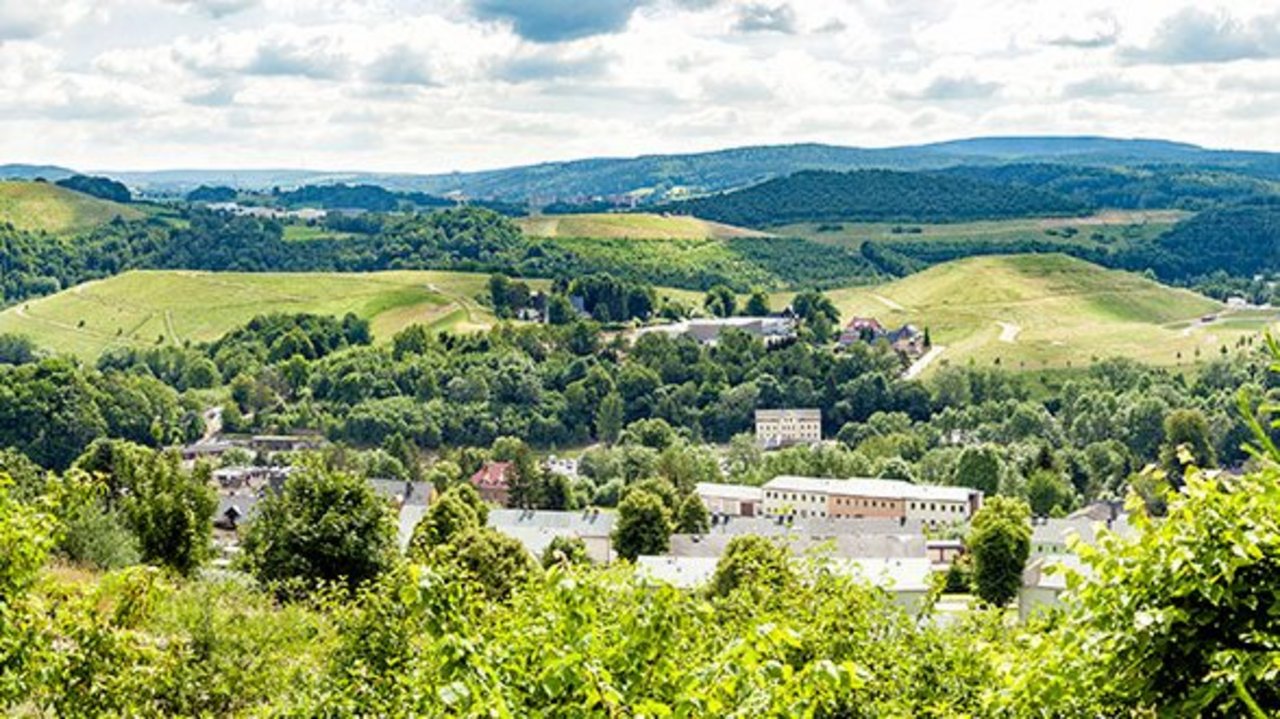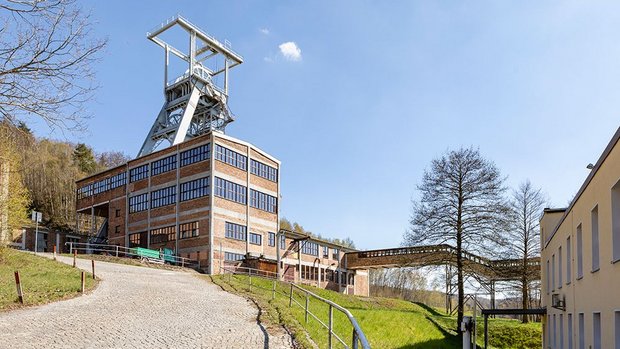We are a world heritage site!
The Erzgebirge/Krušnohorí mining region has held the title of “UNESCO World Heritage Site” since July 2019.
Uranium ore mining
A total of 22 components are part of the World Heritage Site: 17 on the German side and five on the Czech side.
Together, they convey the image of a historic cultural landscape shaped by mining.
The “Uranium Ore Mining Landscape” component represents the extensive uranium ore mining of the former SDAG Wismut, which characterized large parts of the Westerzgebirge. Since the political change in 1990, the federally-owned Wismut GmbH has been tasked with cleaning up the legacy of uranium ore mining. Success in the affected regions is not only important for the people and the environment, it also offers opportunities. Today, most of the landscapes have been rehabilitated and can now be safely reused.
In addition to pit 371 near Bad Schlema, the renaturalized waste rock pile landscape (including waste rock pile 366 in Aue-Bad Schlema) documents the uranium ore mining phase.
Aue-Bad Schlema dump landscape
The Schlema-Alberoda site of Wismut GmbH is located in south-west Saxony, north of the town of Aue-Bad Schlema. One of the world's largest uranium ore deposits was mined here from 1946 to 1990, and around 80,000 tons of uranium were extracted from its veins. The subsidence caused by mining led to severe mining damage in the center of Oberschlema, which ultimately necessitated the demolition of the entire spa district in 1952. Between 1949 and 1990, more than 1000 uranium ore-bearing veins up to 2000 m deep were explored and mined to the north-east of the Oberschlema partial deposit.
Extent of the mine workings
The huge mine workings covered an area of around 22 km² above ground. The amount of mining work involved is illustrated by the approx. 4,200 km of horizontal excavation and approx. 40 million m³ of underground cavities. Significant difficulties in operating the mine included rock temperatures of around 65 °C at great depths, which required special measures for ventilation and air conditioning, geomechanical conditions prone to rockfalls and multiple fractures in the mine. The mine's energy consumption alone reached the level of a medium-sized town.


Increased radiological exposure
As a result of the mining work, 42 waste rock piles with a total volume of approx. 45 million m³ were built up, covering an area of approx. 313 ha. Of these, 21 dumps remained under the responsibility of Wismut GmbH for remediation. In addition to the partial lack of stability, the exposed areas caused increased radiological contamination, primarily due to dust drift and radon leakage. The majority of the waste rock piles have been completely remediated to date.
Shaft 371
Shaft complex 371 in Hartenstein is one of the few uranium ore mining facilities of the former SDAG Wismut that has been largely preserved. The open-cast facilities built from 1956 onwards include the shaft building with a 50 m high steel headframe, the machine house with winding machine and a large functional and administration building. On May 1, 1959, the shaft was transferred from Object 11 to Object 09, which is why it went down in Wismut history as the “Youth Shaft May 1” when it was officially commissioned on May 2, 1959.
Shaft 371 was the most important winding shaft of the former Aue mining operation from the 1960s onwards. The shaft tube was approx. 1,000 m deep and had a diameter of 7 m. Mining in the world's largest uranium vein deposit reached a depth of more than 1,800 meters. The mine, which employed up to 3,000 people, was at times one of the deepest mines in Europe and produced more than 73,000 tons of uranium until it was closed in 1990. The last large Wismut shaft was finally closed in March 2011. Site 371 is still the headquarters of Wismut GmbH's Aue remediation division. The company's own collection of deposits can also be seen there.


